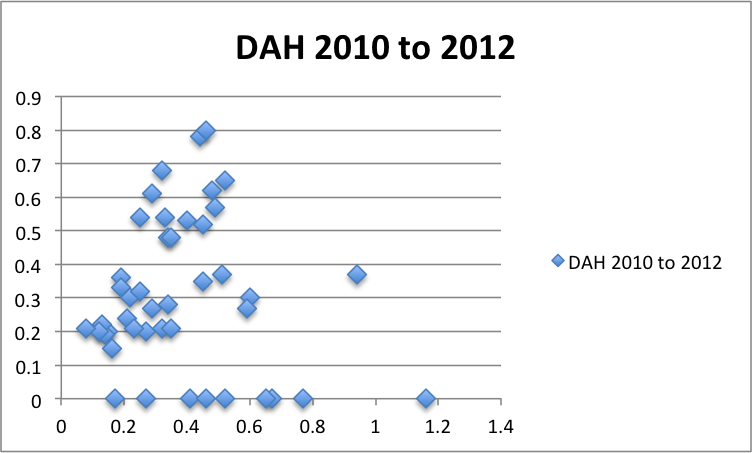I am embarrassed to admit it, but I am just now getting around to analyzing the data I collected from the 2012 field season. I do tend to spend the winter months plugging away at computer based projects, and this year has been even busier than years past. I've been working on developing new tools for SDMs and finishing my demographic model sensitivity analysis project, as well as keeping up with my TA obligations and working on an addition to the climate change paper I've discussed previously here. But this post isn't meant to talk about being busy, it's to express my excitement about analyzing another seasons worth of Glossy Buckthorn data.
One data set I've collected that I'm particularly keen to look at is from a small buckthorn population in northern New Hampshire, on forest service land. In the fall of 2010 I marked approximately 150 individual plants at this site. Unexpectedly, during the late summer/ early fall of 2011, this site was mowed. I lost most of my tags, but about 45 remained connected to the cut plants. Glossy Buckthorn is somewhat notorios for its ability to re-sprout after damage - this is one characteristic that makes it hard to manage. Rather than abandon the site altogether, I decided I would measure the basal diameters (also called diameter at ankle height, or DAH) of the remaining tagged plants. Here is a preliminary plot of what these results look like, showing basal diameter in 2010 versus basal diameter in 2012.
The x-axis is the DAH in 2010 and the y-axis is DAH in 2012. I can see that some plants are not recovering, however it looks like many have grown quite a bit. Also, all of the plants with a DAH > 0 represent some form of regrowth - either regrowth of the original tagged stem or growth of new sprouts. A tenacious plant, for sure. I wrote a bit more about this particular site in another post as well.
Simple preliminary plots like this one have me looking forward to poking at my data and getting to my full analysis over the next few weeks.

No comments:
Post a Comment